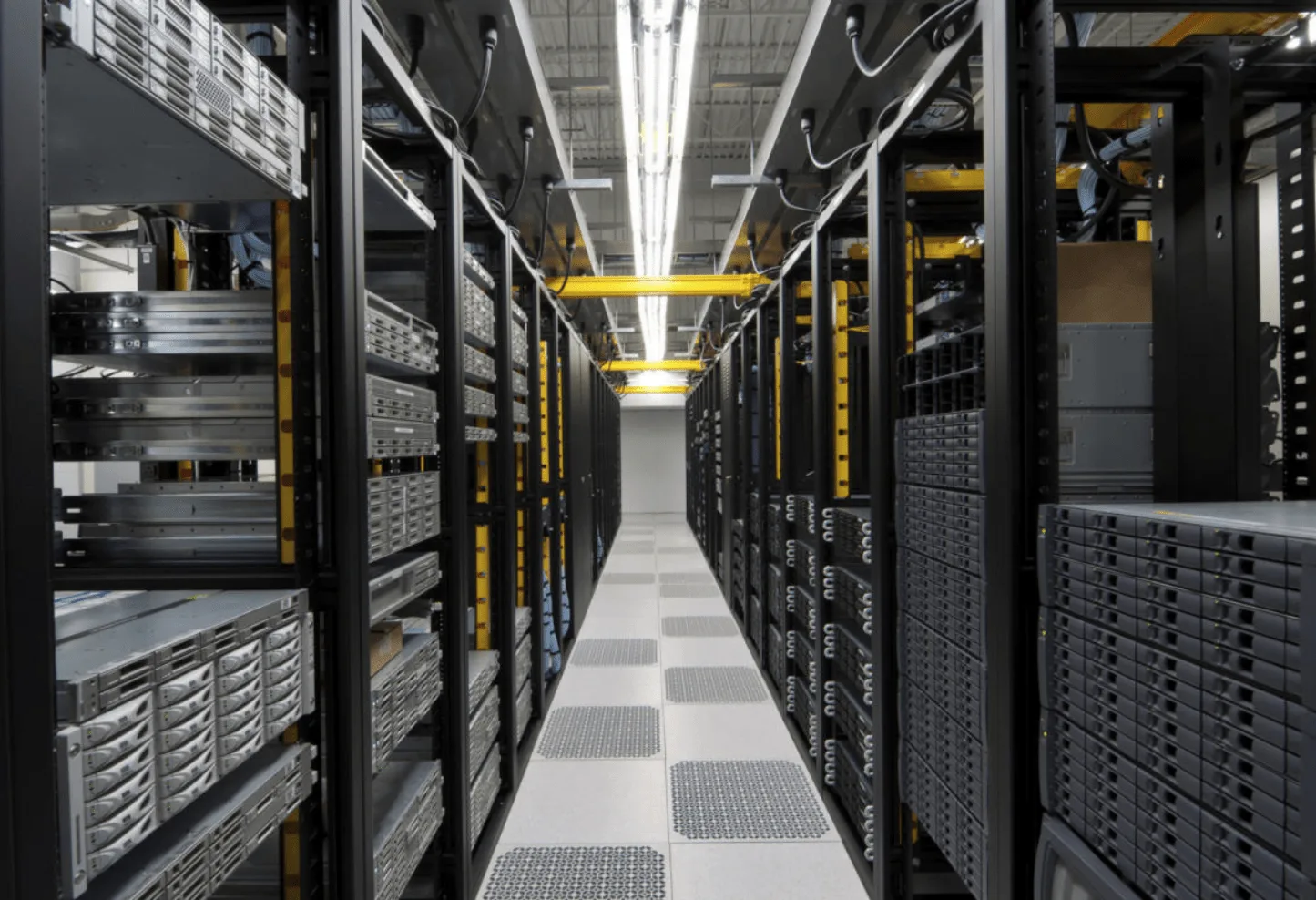The Big Tech industry has invested a great deal in increasing efficiency and reducing the environmental impact of data centres accounting for 3% of global electricity supply
The world we live in is shaped by data centers accounting for 3% today of global electricity supply and consume more power per capita than the whole UK.. Data centers also contribute 2% of global total greenhouse gas emissions.
Another byproduct of data centre refresh activities is electronic waste, also known as E-Waste.
According to a recent EPA report E-Waste accounts for 2% of solid and 70% of toxic waste
The Total Cost of Ownership (TCO), is a measure that evaluates both capital and operational expenses. This is often used by data centers to measure the effectiveness and success of their facility designs. TCO does not take into account the impact data centers have on our environment.
The data centre is still a key piece of business infrastructure as more organisations look to be major players in today’s data-driven economy. But, with the melting of the ice caps at alarming rates, it is not possible to maintain energy-intensive data centres while trying to save the earth.
While most climate change activists are focused on limiting emissions from the automotive, aviation and energy sectors, it’s the communications industry that is on track to generate more carbon emissions than all of the aforementioned sectors.
Global reliance on cloud services is driving the market’s steady growth. This is great news for businesses, but it has also led to increased energy consumption and carbon emission, which produces as much CO2 than the airline industry.
Although there are many factors that can affect energy consumption, it is possible to make data centres 100% carbon neutral by making some small changes in current practices and prioritising low-carbon energy sources.
Managers of data centres who see a decrease on carbon emissions will also see a decrease with costs. A reduction in power consumption will directly impact the bottom line.
What Is a Data Centre?
A data center, also known as a Datacenter or Data Centre, is a networked facility that includes storage systems, computing infrastructure, and computers. It allows organizations to process, store, disseminate large amounts data. The data center is a vital asset to every business. It houses applications, data, and services that are essential for daily operations.
Enterprise data centers include facilities to secure and protect cloud computing resources as well as in-house resources. The boundaries between enterprise data centers and cloud providers’ data centres are becoming less distinct as enterprises move to cloud computing.
Here are some the main points of Data Centre environmental impact
- Data Centre E-Waste
E-Waste can be created when data centers get rid of their storage and networking equipment. E-Waste amounts to between 20 and 50 million metric tons.
Each year, this waste is disposed of worldwide, dumping heavy metals into our landfills. E-Waste will grow by 8% every year if no action is taken
Many data centres had several options for disposing of E-Waste. They could partner with a recycle company, reuse hardware at work, or sell the hardware.
12.2% do not recycle any system, which directly contributes towards the E-Waste problem. There are many reasons why you might not recycle. These include the time and cost involved in recycling, difficulty finding a partner and a lack of planning for E-Waste management.
- Global Warming
Despite their high power consumption, data centres are not yet a major cause of global warming.
As a result, data centres are highly regulated facilities that attract a lot of scrutiny from many organizations. As an industry, data centres are facing increasing pressure to reduce their carbon footprint.
But how do data centres reduce their energy costs?
By adopting more renewable energy sources, data centres can become carbon neutral. This will reduce their impact on the environment, while still increasing their profits.
A major source of energy consumption for data centres is cooling systems. These systems can be responsible for up to 40 percent of the total energy consumption of a data centre. Innovative technology in the data centre industry is improving their efficiency and sustainability.
These methods include indirect evaporative air solutions and independent fresh air cooling.
Energy Efficiency
Aside from improving the overall environmental sustainability of a data centre, energy efficiency is also an important concern.
Data centres are notoriously inefficient, and energy efficiency can be improved at three levels: the IT equipment, the ancillary equipment, and the computing management. The energy efficiency of a data centre is determined by its power use efficiency – the total electricity demand minus the amount of energy used to operate the IT equipment.
Better management strategies are essential for reducing the overall energy consumption of a data centre. Depending on the operating conditions, data centres can save a large 15% of electricity. But many operators do not adopt these strategies due to their legal structures and ownership structures.
Generally speaking, data centre operators are not required to own the servers they house, and they are not legally mandated to consolidate workloads. But, these challenges should not keep operators from improving their energy efficiency.
Despite the increasing demand for data centres, they are gaining in popularity and energy efficiency. If the data centre market continues to expand at the rate projected, energy efficiency must be improved.
As a result, the EU’s Climate and Energy Policy is defining a series of policies aimed at increasing energy efficiency in the data centre sector. These policies also include energy system integration and demand response targets.
Renewable Energy Sources
The tech industry has invested a lot in improving energy efficiency and implementing renewable energy strategies, and is the largest buyer of renewable energy. But most data center sustainability strategies focus on purchasing renewable energy certificates, which are considered low quality products, and cannot credibly support claims of 100 percent renewable energy use. Instead, data centers should focus on integrating renewable sources of power into their operations.
Solar power is a particularly good choice for data centres, as it can produce enough power to run a data centre for several decades. Even Microsoft, a software giant, has pledged to be carbon-negative and has committed to using 100% renewable energy.
As data centres increase in size, it’s important to invest in renewable energy sources. The energy suppliers have seen an opportunity to benefit from the growing demand for these power supplies.
Companies like Facebook, Microsoft, and STACK Infrastructure are supplying renewable energy to their data centres. The companies are also working to find effective alternatives to diesel generator usage and make data centres more energy-efficient and less dependent on the utility grid.
While many data center operators are already committed to renewable energy, many still are not. These energy costs can exceed half the average cost of the data centre. To reduce these costs, operators must invest in efficient technology and choose locations with best access to renewable energy.
Although purchasing renewable energy certificates is a reasonable first step toward a green energy strategy, it is not enough. It does not guarantee 100% of the renewable energy used at the data center. It simply adds the equivalent renewable energy to the grid. Where direct retail PPAs are not possible, virtual/financial PPAs are an alternative. The offtaker needs to assess how much renewable energy the data centre will consume to reduce its power bill.
The Perfect Climate for Data Centres
Iceland has the perfect climate for data centres. This country also offers the best access to renewable energy. Hydroelectric and geothermal power are the major sources of renewable electricity, while the country has a steady overnight demand. The combination of these two energy sources promotes sustainability and high-efficiency energy rates
Making Data Centres More Sustainable Long-Term
A IDC study states that worldwide data traffic will grow by 61 percent and 175 zettabytes by 2025. This means that approximately 75 percent of the population will have at least one data interaction every 18 second. It’s evident that there will be more data centres around the world as global internet penetration continues to rise and connected technologies become mainstream.
The IT sector must look at alternative models to reduce their carbon footprint if we cannot live without data centers. This is a greater share than any country, except the USA, China, and India.
However, the impending climate crisis is not a new topic of discussion. The same can be said about the sustainability and viability of data centers.
Reducing The Carbon Footprint
While reducing the carbon footprint of data centers will help to mitigate the climate crisis, we cannot rely solely on Amazon’s lip service. If we are to see long-term, meaningful changes in the world, government regulation is essential.
This includes industry-wide standards being strengthened and commitments to “Green IT”. Public pressure is also crucial. There is some progress, but it is slow and frustratingly slow. It is clear that there are still many steps to be taken.
What can be done to minimize the effect of data centers on the environment?
5 Ways we can lessen a data centre’s environmental impact
- Use power on demand and monitoring.
- Invest in new cooling techniques.
- Invest in renewable energy.
- Invest in cooling techniques.
- Invest in new equipment.
- Use an advanced renewable fuel, Crown HVO.
- Use power on demand and monitoring
Power quality management systems that identify potential problems in cooling and power supply will help to fix them. Remote sensors monitor temperature, power and emissions, so data centres can receive immediate notifications about any problems. This will make sure that a simple bug does not become a major problem and causes millions of pounds in loss for the data centre as well as its customers.
- Invest In Cooling Techniques
Data centres use a lot of cooling. However, poorly designed cooling systems can cause increased carbon emissions. Free cooling and cold aisle corridors have a positive effect on energy consumption. The energy needed to locate services in closed-off aisles with doors and roofs at each end can be significantly reduced.
Data centres also have the option of investing in “free” cooling methods, such as using the air and water outside to chill the water in cold aisle corridors. This is an alternative to man-made cooling techniques like air conditioning.
- Invest In Renewable Energy
Instead of needing additional space, data centres can make full use of large roof spaces that aren’t being used for solar panels or wind turbines. They can be a cost-effective, long-lasting addition that will help to lower electricity costs and reduce carbon emissions.
- Invest In New Equipment
Equipment that is older consumes more energy to operate. New and improved technology is constantly being developed. This means that equipment can be made more efficient and better performing.
- Use Advanced Renewable Fuels – Crown HVO
Crown HVO is breaking new ground
Red diesel (gas oil), which is readily available, economical and efficient enough to power data centres in an emergency, is an important consideration. Data centres need to be environmentally conscious. Hydrotreated vegetable oil ( HVO fuel) has been rapidly becoming an attractive and viable alternative to red diesel.
According to a Greenpeace report last year, they have seen a significant increase in the number of large internet companies choosing renewables. Renewable fuels are crucial to reaching the government’s 2050 net-zero greenhouse gases target.
Underutilised Computing and Wasted Resources
It’s not surprising that the transition from a data-center-driven economy has been fraught with operational inefficiencies, given how quickly computing power has grown in recent years.
A survey conducted among 100 IT professionals found that more than half of them only use 20%-40%. Servers, which are often left partially idle, continue to consume significant amounts of energy. This can cause businesses to incur unnecessary costs and contribute to hundreds of millions of tons CO2 emissions.
Companies have implemented two solutions to this problem: updated servers and improved cooling systems. Microsoft has shown significant energy savings in cooling costs, by submerging server racks into specially designed fluids. This is in addition to its well-publicised project Natick which examines the feasibility of data centers below the seas, “powered by offshore renewable electricity.”
The role of new processors in data centers is also important. This allows for increased computing power without increasing energy use. Furthermore, the ongoing arms race between chipmakers bodes well to improve the energy-computing ratio.
Efficient Power Supplies Reducing Data Centre Power Consumption
Data centers can maximize overall system performance and density by using space-saving power supplies that are highly efficient. This paper shows the significant cost savings associated with an efficient power supply.
The scenario shows that a data center could reduce electricity costs by nearly $100,000 per year. This is equivalent to nearly 23,000 barrels oil.
Data centers will need to find new ways to cut power consumption and increase efficiency as more regulations are implemented in the U.S., Europe and elsewhere. Advanced Energy says that data centers can meet or exceed regulatory requirements by using efficient power supplies.
Extended Summary
Increasing awareness of the environmental impact of global data centers is an increasingly important issue. Customers and executives alike are aligned on the importance of using renewable energy sources.
With cloud computing growing at such a rapid rate, the industry is focusing on sustainability more than ever. Some of the world’s biggest cloud builders have accelerated their commitment to green energy, and this is likely to lead to increased demand for green data centres







